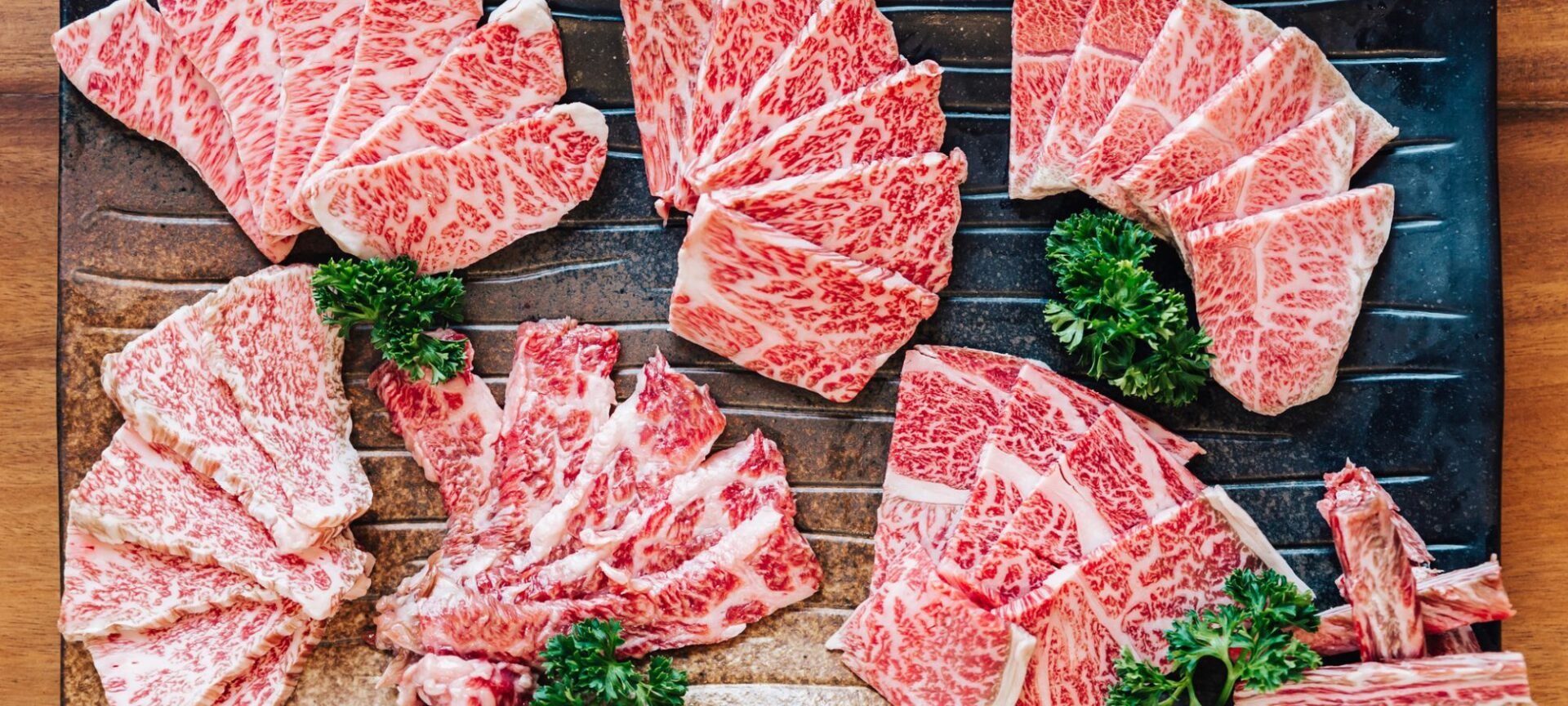Texas Wagyu vs. Japanese Wagyu – Is There a Difference?
Discover > Texas Home Cooking > Texas Wagyu vs. Japanese Wagyu – Is There a Difference?
A type of beef that has been making waves in both Texas and worldwide culinary circles is Wagyu. Boasting culinary roots that can be traced back more than 35,000 years ago, Wagyu beef is globally revered as one of the most highly prized cuts of meat on the market. Wagyu is identified by its signature “marking”, as well as its rich, buttery flavor and melt-in-your-mouth texture. Paired with a multitude of health benefits including crucial omega-3 and omega-6 fatty acids, gourmets and casual diners alike pay a pretty penny to taste a cut of this special, world-class meat. With various options available in both Japan and North America, it’s important to know what you’re buying. And what are the differences between Japanese and American Wagyu beef, if any?
From Japan to United States
Wagyu originated from the islands of Japan—in fact, the term “wagyu” was once used to refer to all Japanese beef cattle, as “wa” means “of Japan”, and “gyu” means “cow”. Japanese cattle were historically divided into four separate breeds: Kurogewashu, or Japanese Black, Akagewashu, or Japanese Brown, Nihon Tankakushu known as Japanese Polled, and Mukaku Washu, AKA Japanese Shorthorn. Exporting these breeds was strictly limited throughout much of Japan’s modern history, though a small number of cattle exports were permitted between 1975 and 1997.
It was during this time that American cattle farmers began to import Wagyu cattle, particularly the Japanese Black. While some farmers aimed to keep the cattle purebred, much of the Wagyu beef found throughout the US today is the result of crossbreeding with other types of American cattle. This leads to several key differences between Japanese Wagyu and its Western counterpart.
Grading System of Wagyu
In both Japan and the US, Wagyu quality is governed by an official grading scale. However, the scales in each country are quite different. In Japan, the Japanese Meat Grading Association imposes a rigid set of guidelines for all Wagyu meat, focusing on characteristics such as texture, marbling, color, fat content, and the overall firmness of the meat.
Cattle-raising techniques play an important role in the outcomes of this scale, with an emphasis on maintaining low stress levels for animals, providing clean, open living spaces, and feeding the cows a diet of high-grade wheat, rice plants, and hay. The grades of Wagyu beef in Japan are dictated by letter (A-C) and number (1-5), with A4 and A5 being the highest-ranked cuts –– an honor reserved for only 100% Fullblood Wagyu products.
The Difference
Meanwhile in the US, Wagyu is regulated by the American Wagyu Association, which was first founded in 1990 to match Japan’s rigorous quality standards for beef. Despite this, much of America’s Wagyu meat, also known as “Kobe Beef”, is typically crossbred with American Angus, resulting in a product that experts consider to be generally less “pure” than the Japanese kind. As it has less marbling, however, American Wagyu also tends to have a lower fat content than Japanese Wagyu –– a trait many find quite appealing. Often grilled, pan-seared, or roasted over an open flame, American Wagyu sports a hearty, meaty taste that is compatible with a wide range of dishes.
Graded according to color, American Wagyu is categorized by Black and Gold grades, with Gold being considered the “best of the best”. While both grades are undoubtedly a step above “regular” Prime beef, experts lean in favor of Japanese Wagyu for its overall quality and expert product. Catching up to centuries of experience may seem like a tall order, but American Wagyu farmers seem up to the task, continuing to learn and evolve. Whether purchasing from home or abroad, a taste of Wagyu beef is sure to bring a newfound flare to an otherwise commonplace meal.





